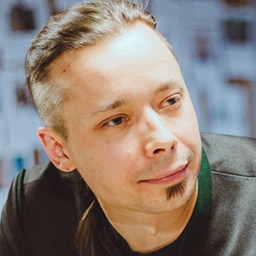We in Bureau Verstak believe that the presentation of scientific knowledge can become a bright and unique experience, as well as complement the story.
To prove this, we have teamed up with ZIRCON Research group, one of the oldest independent Russian companies, specialized on sociological and marketing research, information and analytical services, political and management consulting. Together we created a preliminary draft of the report 'Urban local identity as a basis for sustainable communities' and presented it at the VI Grushinskiy conference. Learn how sociology meets design from our hot off the press digest.




Lelya Jvirblis
project coordinator,ZIRCON Research group
How I met your social research ¶ Why it is impossible to present a modern social research without visual components?
Today, in the era of information overload, our perception is shifted from textual to visual representation, and it is not enough to know how to attract your target audience with words but also it is very important to shape it in a beautiful and comprehensible way. Moreover, our cooperation with Verstak has shown that the visual part based on scientific data works as a complement of the research itself, and creates additional opportunities for its interpretation.
For sociologists the publication of the report includes the choice of the distribution channels and target audiences. Hypothetically, the last could be:
1.Media. Remember your student days and ask yourself what parts of your term papers were the most elaborative? Actually, the introduction and conclusion. Moreover, not because no one ever reads the rest, but because these parts represent the basic idea of your study. In addition, every visual element should be clear and fine, so it can be easily distributed via your website or in the print edition.
2. A wide range of readers. All we click on pretty pictures while surfing the web, so quite a few materials can pick our interest by the illustration only. Never forget this simple formula: people see pictures first and just then they discover your work.
3.Managers.. They need clear analysis and conclusions, as well as the ability to find out other insights. Give them it!
4. Researchers.your colleagues, for whom it is important to highlight the methodology as well as the opportunity to discover new ways of research. No simplifications — save the text for them.
Well, if sociologists have the knowledge, but do not know how to apply it in design, and designers have all the tools and skills that sociologists need, but do not speak their language, who should be in charge of the visualization?
Actually, you need a kind of translator from sociological language to the designers' one; a person, whose main task will be to create a prototypes, set the terms of reference and explain the purpose of visualization and the ideas that it would represent. Summing up, you need a producer.





Maria Chernykh
project coordinator,Bureau Verstak
Hey, producer! ¶ How to co-produce the visualization of social research.
While you are working on the project, there is always something that slips away in its hot phase, something that reduces the productivity and affects the result. That is why cooperation and dialogue between the customer and designer should be based on mutual trust and respect. A literate contract is the key to success here. What should be pointed out in such a contract signed by both parties?
1.Key issues. First of all, specify the problem in simple words: who is your buyer and what is the purpose of your product?
2.Clea plan. Approve the plan and the project’s content with your client before doing anything, as well as your steps at each stage. Do not be afraid to spend extra time and efforts on it — it will simplify and speed up your work in future, as well as help to avoid unpleasant surprises both for you and your client.
3. Active dialogue. Do not be afraid to ask questions and answer them, because you and your client are professionals in different fields, you speak different languages, and this is normal. On the contrary, silence often means that something goes wrong. One more moment: assign one authorized manager from each party (yours and your client) — otherwise you will pull a cart in different directions just like the characters of the fable ‘The swan, the pike and the crawfish’.
4.Trust the professionals. If you trust your dentist, you do not dispute his decision. Design is just the same, only without anesthesia. You had a reason to ask for a help so be sure that you will get high-quality service.
5.Check-points. Sum up the targets of your project and follow them with check-points. Further work on the project will depend on whether you follow them or not. That’s why it is impossible to come a few iterations back and change something afterwards. Well, actually it is possible (as we know, nothing is impossible), but it will take time and money.





Denis Ponomarev
project coordinator,Bureau Verstak
Visualise this! ¶ Five milestones of sociologist and designer's successful interaction.
It is impossible to make a designer love your study more than you do it. But you can interest him or her in it. To reach this target observe five simple rules:
1.Tell your designer what your study is about as if you were explaining it... let's say, your grandmother. What did you study and why is it important? Once the designer understands what you need, the work goes on smoothly.
2. Pay attention to the research audience: who will be acquainted with the results of your work and in what form it is more familiar and comfortable to represent it? The form of representation will tell you what materials to use and how to saddle stitching.
3. Choose the distribution channels. Remember that the visualisation is, in fact, the production of a whole group of materials for distribute it in both print and electronic form.
4. Tell your designer what you need to focus on and what to avoid. No one knows how to tell your story better than you.
5. Reduce the noise in your message to a minimum: transfer to the visual part only the things that are really important and keep your infographics simple.
We hope that now you are sure that science is cool, fun, and beautiful as Verstak’s team. And remember: when you post another funny picture or a witty meme-comment on someone's Facebook’s timeline it is sociology.
